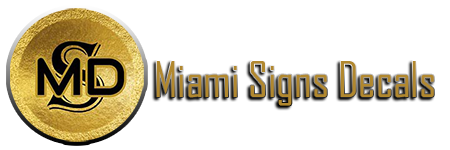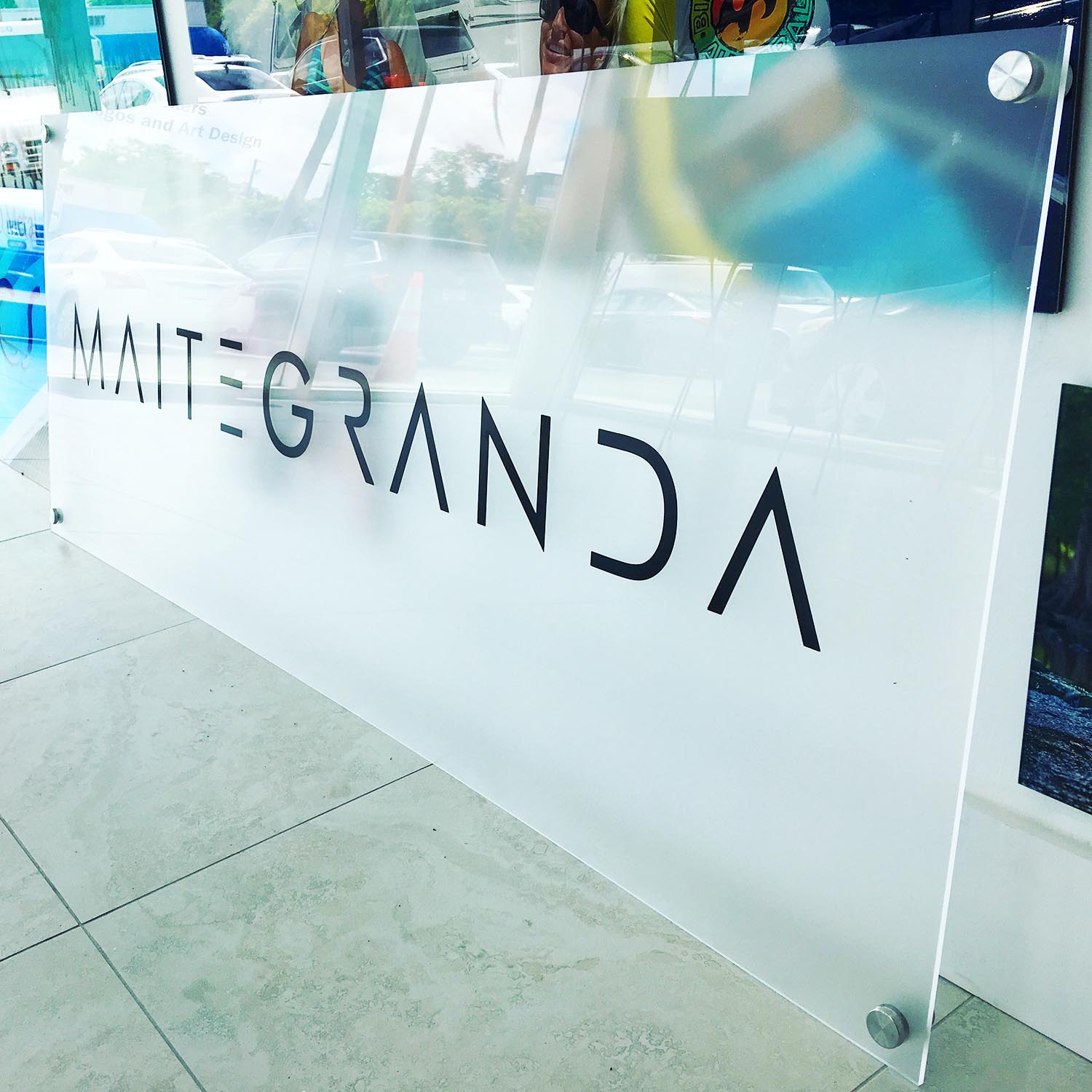The Ultimate Guide to Creating a Powerful Business Sign: A Roadmap for Small and Large Brands Alike
Introduction: Why Your Business Sign Matters More Than You Think
The Powerful Business Sign: Whether you’re a startup launching your first brick-and-mortar shop or a national brand opening a new flagship location, your business sign is more than just a label — it’s the face of your brand, the first impression, and often a silent salesperson that operates 24/7.
In today’s visually driven world, a well-designed business sign can attract attention, reinforce brand identity, and directly influence foot traffic. This guide aims to walk you through everything you need to know to create a powerful, effective business sign — whether you’re doing it for the first time or refreshing an outdated look.
Understanding the Purpose of a Business Sign
Before getting into design elements or materials, you need to ask: What do I want this sign to accomplish?
Common Objectives:
- Attract Attention: Draw in new customers
- Brand Reinforcement: Display colors, logos, and slogans to embed your identity in the public’s mind
- Provide Direction: Help people locate your business
- Offer Information: Store hours, services, promotions, or calls to action
Every sign should serve at least one of these purposes, and the best ones do all four seamlessly.

Types of Business Signs (With Examples)
Different signs serve different functions depending on location, lighting, audience, and context. Here are the main types:
1. Outdoor Signs
- Monument Signs: Freestanding signs at entrances (common for corporate offices)
- Pylon Signs: Tall roadside signs — great for high visibility
- Channel Letters: 3D illuminated signs with individual letters — very popular for storefronts
- Window Graphics: Great for temporary sales or branding on glass
2. Indoor Signs
- Reception Signs: Behind-the-desk branding for lobbies
- Wayfinding Signs: Help customers navigate the space
- Point-of-Purchase (POP) Signs: Promotes products at checkout or aisles
3. Digital Signs
- LED Panels: Dynamic and customizable — ideal for promotions
- Interactive Displays: Touchscreens for engagement, popular in modern retail
💡 Tip: Consider your audience’s physical movement. What will they see first? What will guide them deeper into your space?
Design Elements That Make or Break Your Sign
1. Typography
- Readable from a distance?
Avoid fancy cursive if visibility matters. - Hierarchy of Information:
Make your brand name larger than the tagline or contact info.
2. Color
- Brand Consistency: Stick to your brand palette.
- Contrast is Key: High contrast between text and background increases readability.
- Psychology of Colors:
- Blue = trust
- Red = urgency/action
- Green = eco/health
- Yellow = energy

3. Logo Placement
- Your logo should be central or top-left aligned, depending on the format. It must scale well across sizes.
4. Material Aesthetic
- Materials should reflect your brand image.
- Brushed aluminum = modern, tech-savvy
- Wood = artisanal or natural feel
- Acrylic = clean and contemporary
Sizing and Visibility Guidelines
Viewing Distance vs. Letter Height (Industry Rule of Thumb)
| Viewing Distance | Minimum Letter Height |
|---|---|
| 100 ft | 4 in |
| 200 ft | 8 in |
| 300 ft | 12 in |
| 500 ft | 20 in |
Location Considerations:
- Street speed limits affect how quickly someone can read a sign.
- Lighting conditions influence contrast — test your sign under different times of day.
Materials — Choosing the Right One for Your Brand
Most Popular Materials:
- Aluminum: lightweight, rust-proof, modern
- Acrylic: glossy, vibrant colors, durable
- Wood: rustic, handcrafted feel
- PVC Foam Board: Budget-friendly, indoor use
- Vinyl: Flexible, best for window graphics or banners
Consider Durability:
- Exposure to rain, wind, or UV light?
- Will it be moved frequently?
- Temporary vs. permanent?
Compliance, Permits & Regulations
Many businesses skip this step, and it ends up costing them.
Check your city’s signage ordinances regarding:
- Size limits
- Height restrictions
- Lighting (especially illuminated signs)
- Historical zone requirements
- Language or bilingual requirements
Always factor in a few weeks for sign permitting and approval.
Installation: Planning for Longevity
Hiring a professional sign installer ensures:
- Correct anchoring
- Compliance with safety standards
- Longer durability under weather conditions
Also consider electric wiring needs for illuminated signs —don’t DIY this part unless you’re licensed.
Budgeting Your Signage Project
A common misconception is that signage is cheap or one-size-fits-all. The price depends on:
- Size
- Material
- Illumination
- Mounting style
- Custom fabrication
- Permitting and installation
Sample Budget Tiers:
- Low-budget (~$200–$500): Vinyl banners, window decals, foam boards
- Mid-tier ($1,000–$5,000): acrylic logos, non-lit dimensional letters
- High-end ($5,000–$25,000+): LED channel letters, custom monument signs, digital signage
Remember: a sign is a long-term investment that returns its value daily.
Mistakes to Avoid
- Overloading with text — simple signs are more memorable
- Low contrast — dark text on dark backgrounds disappears
- Wrong size — unreadable from intended viewing distances
- Not matching the brand — a vintage bakery shouldn’t have a futuristic sign
- Poor installation — crooked signs destroy first impressions
Trends in Signage Design (2025 and Beyond)
- Sustainable materials: recycled aluminum, eco-friendly vinyl
- Digital interactivity: QR codes, motion-triggered displays
- Minimalist design: clean lines, muted palettes
- Augmented reality (AR) integration: scan and engage features
- LED and smart lighting: color-shifting based on time or event
Staying on top of trends ensures your sign doesn’t age poorly.
Case Study – From Blank Wall to Brand Magnet
Imagine a café owner in Miami installing a vintage neon sign paired with a floral wall backdrop and wood menu board. The result?
- A 300% increase in walk-ins
- More Instagram tags
- Visual consistency across packaging and website
This illustrates how a good sign becomes a living extension of your marketing.
Why Partnering with the Right Signage Expert Makes All the Difference
While DIY tools are tempting, there’s a world of difference between a homemade banner and a professionally crafted brand sign.
A trusted signage company offers:
- Strategic design consulting
- Custom material options
- 3D render previews
- Permitting assistance
- Expert installation
- Ongoing maintenance plans
Soft CTA: Why [Your Brand Name] is the Ideal Partner for Your Next Sign
At [Your Brand Name], we don’t just make signs — we help brands show up boldly in the real world. Whether you’re a small startup or a national franchise, our mission is to craft signage that speaks clearly, creatively, and confidently.
With over [X] years of experience, premium-grade materials, and a team that knows how to turn ideas into icons, we’re here to ensure your brand stands out — literally.
🔹 Free consultations
🔹 3D mockups before fabrication
🔹 Fast turnaround and nationwide delivery
Ready to put your brand in the spotlight? Contact us today and let’s bring your vision to life.
Conclusion: Your Sign is More Than a Logo — It’s a Landmark
Your business sign is more than a marketing tool — it’s a signal, a message, and a marker. Done right, it speaks volumes before your staff says a word.
With the right strategy, design, materials, and installation — guided by professionals who care — your signage becomes a magnet, drawing the right people at the right time, every day.

